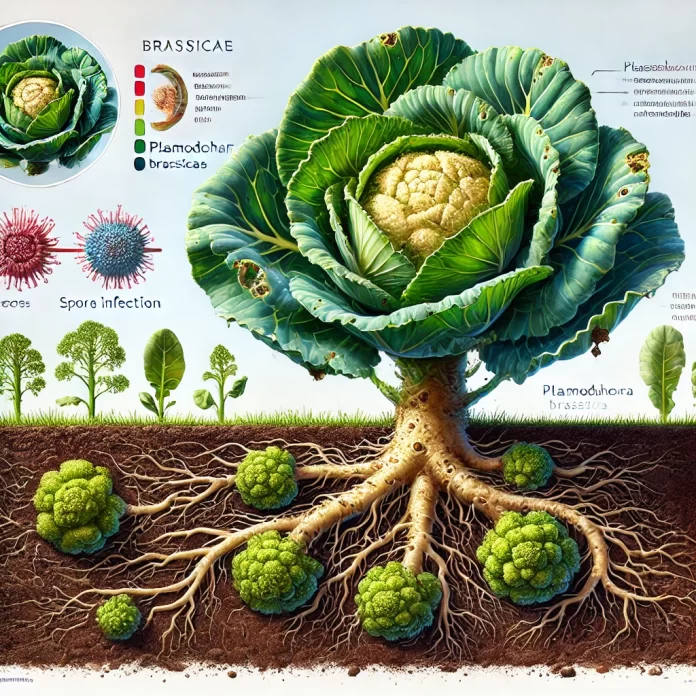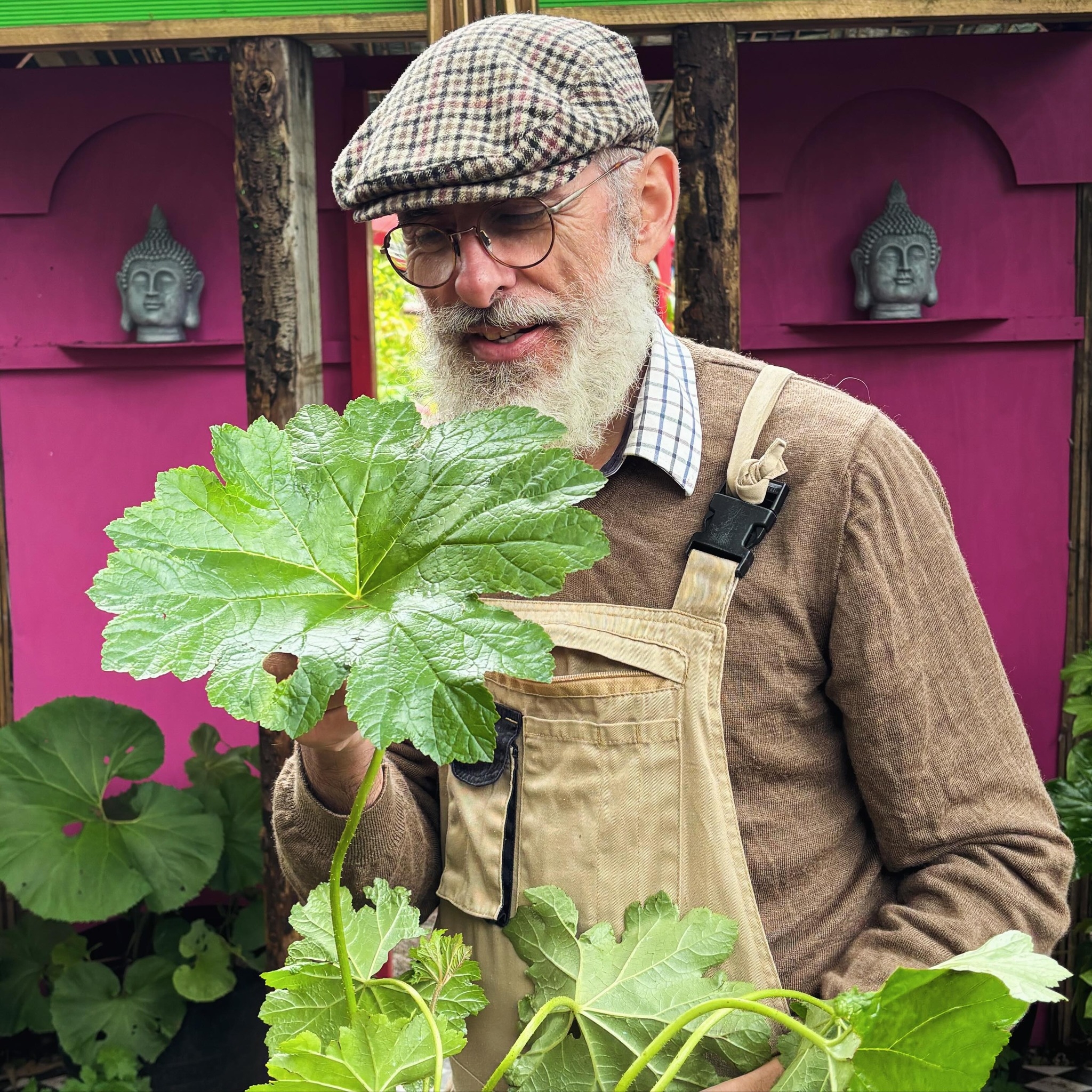Anbury (Clubroot)
Overview
Scientific Name: Plasmodiophora brassicae (causal organism)
Common Name: Anbury, Clubroot
Type: Soil-borne disease affecting brassicas
Affected Plants: Cabbage, cauliflower, broccoli, Brussels sprouts, turnips, radishes, and other members of the Brassicaceae family
Anbury, commonly known as clubroot, is a destructive soil-borne disease caused by the pathogen Plasmodiophora brassicae. It leads to the swelling and distortion of roots, restricting nutrient uptake and causing wilting, stunted growth, and plant death. The disease is persistent in soil and can remain viable for years, making it a major challenge for brassica growers.
Symptoms and Identification
1. Root Symptoms
- Swollen, distorted, and club-shaped roots
- Discoloured, soft, or rotting roots in advanced stages
- Reduced root function leading to poor water and nutrient absorption
2. Above-Ground Symptoms
- Wilting, particularly in warm weather
- Stunted or slow-growing plants
- Yellowing or purpling of leaves due to nutrient deficiencies
- Early plant death in severe infections
Causes and Disease Cycle
- Plasmodiophora brassicae is a soil-borne pathogen that infects root hairs.
- The disease thrives in acidic, wet soils and spreads via infected soil, water, and contaminated tools.
- Resting spores can survive in soil for over 10 years, making crop rotation alone ineffective.
Prevention and Control
1. Soil Management
- Raise soil pH: Lime the soil to pH 7.2 or higher to reduce disease severity.
- Improve drainage: Avoid waterlogged conditions, as the pathogen spreads more easily in wet soils.
2. Crop Rotation
- Avoid planting brassicas in infected soil for at least 7 years.
- Rotate with non-host crops such as onions, beans, or cereals.
3. Resistant Varieties
- Some clubroot-resistant brassica cultivars are available.
- Growing resistant varieties reduces the risk of infection but may not eliminate it completely.
4. Hygiene and Prevention
- Clean tools, boots, and machinery to prevent soil transfer.
- Use certified, disease-free transplants to avoid introducing clubroot to new areas.
5. Organic and Chemical Control
- Organic matter: Adding compost or well-rotted manure can improve soil health.
- Biocontrol agents: Some beneficial fungi and bacteria can help suppress Plasmodiophora brassicae.
- Fungicides: There are limited chemical treatments, but some soil treatments may reduce pathogen levels.
History of Anbury in the UK
Anbury has been recorded in the UK for centuries, particularly in areas where brassicas have been cultivated extensively. Historically, farmers recognized it as a devastating disease that could ruin entire crops. Before modern disease control methods, liming the soil was one of the earliest recommended practices to reduce infections.
In the 19th and early 20th centuries, anbury was a major concern for market gardeners and rural farms. With the rise of commercial brassica farming, researchers focused on soil health, crop rotation, and resistant varieties to combat the disease. Despite these efforts, anbury remains a persistent problem in some areas, particularly where brassicas are grown repeatedly.
Legal Status and Control in the UK
Anbury (clubroot) is not a regulated disease in the UK, but it is a widespread and serious problem for brassica growers. DEFRA and the AHDB (Agriculture and Horticulture Development Board) provide guidance on managing the disease. Farmers and gardeners should take preventive measures, as there is no chemical cure once soil becomes infected.
For commercial growers, soil testing and careful rotation planning are essential to avoid economic losses. Gardeners can take similar steps by monitoring plant health, improving drainage, and maintaining good soil hygiene.




